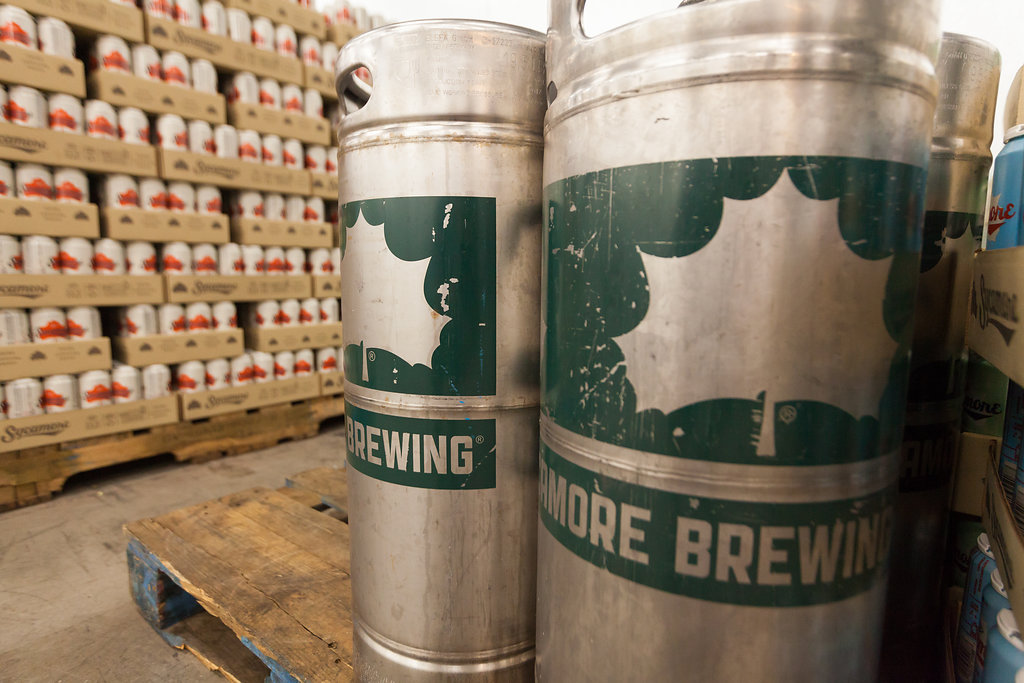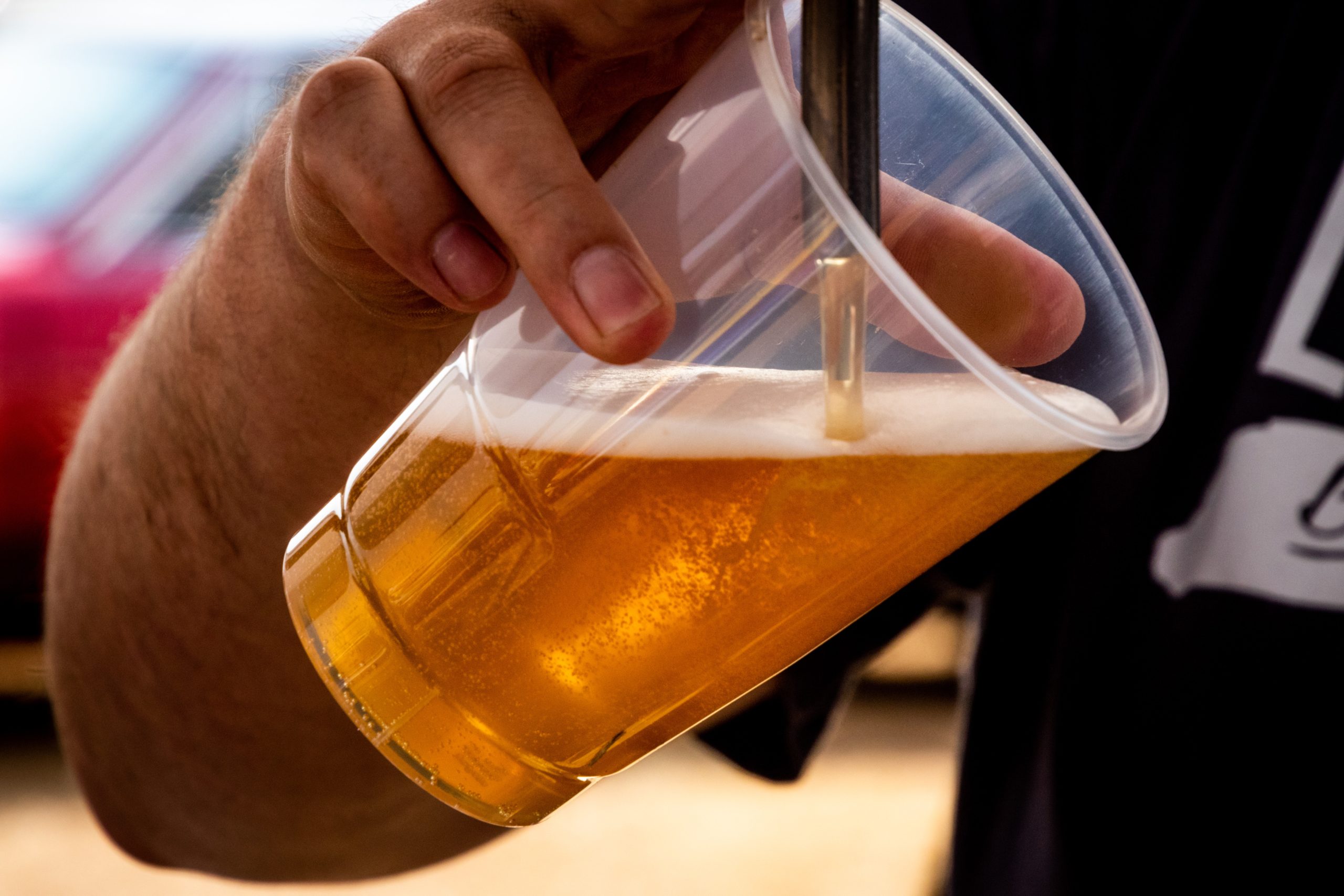Whether your brewery self-distributes or works with a third party to get your beer out there, understanding how to get organized and track your success smarter is a worthwhile investment.
Marty Ochs, founder of E3 Strategies, and Justin Vitti, director of operations at Ship Bottom Brewing and general manager at Cape Beverage Distributing, know a thing or two about the world of distribution. We put this post together using their recommendations from their presentation at Ekos_Con, an annual gathering of Ekos customers and partners.
Preparing Yourself
The state you live in will likely determine your options when it comes to distribution. While some states only allow third-party distribution, others are more flexible. Whatever the case, understanding the pros and cons of each option is always helpful.
No matter the avenue you choose, your sales director should be executing the same tasks for every form of distribution — there is no easy way out. Every producer is trying to get their product to the consumer in the most profitable and brand-positive way. With that large task comes some added responsibility: you need a plan, you need to operate distribution like it is its own business, and you need to learn how to succeed from experience. All of these steps mean one thing: don’t walk into this blind.
Staying true to your mission and values is important to successfully enter the world of distribution. If you choose to distribute yourself, that means you completely control the message. On the flip side, wholesale partners often have their own priorities so you should choose partners that align with your goals and message. In addition to laying out the values that are important to you and your team, you should prepare objectives for this stage of growth. Are you looking to grow your brand in the local market and maximize shelf space? Get your products in front of a new audience to drive back to your taproom? Increase your distribution to other states? Consider both your most outlandish and most practical goals.
You don’t have to (nor should you) put all your eggs in one basket. If it’s legal in your state, you should do a bit of self-distro alongside your wholesale distribution to cover all the bases. If any of your channels suddenly shift, you don’t want to be so far down the hole you can’t climb out — be smart.
Focus on the Numbers
Truly understanding your business’s financials is an absolute must. Not tracking costs by SKU and batch will only leave you without valuable information, and while pricing based on your competitors is a good place to start, using it as your only metric could stunt your sales. Instead, set your margins ahead of time and gather as much data as you can using beverage distribution software so you can easily access the data you need to make important decisions.
Generally speaking, a freight on board (FOB) margin of 30%+ for packaged goods and 50%+ for draft are considered healthy. However, these numbers are not cemented — Marty says he’s seen some breweries come in below these margins and make it up in costs and sales volume. These percentages are just general recommendations.
One non-negotiable number to note, however, is your COGS by batch and SKU. Without these essential calculations, you’re playing a guessing game when it comes to pricing in and out of your taproom.
When it comes to setting prices with your distributors, work backward from the shelf — meet consumers there. Remember: whether you work with a distributor or distribute yourself, be prepared to set a higher cost than you would charge in your taproom. Distributors are going to skim off anywhere between 18% and 36% for packaged and draft goods. Retailers are going to take their cut too — anywhere from 8% to 40% depending on the size of the retailer (mom and pop shops are going to be on the higher end).
Entering the Distribution Market
Akin to the craft beer scene, the distribution landscape is always changing. Marty says current trends point to consolidation in the world of distributors: lots of the smaller guys are getting bought by the big distributors. This is definitely something you should be mindful of when picking a partner to work with.
To find the right fit, it’s essential to ask a lot of questions of any potential distributors. Ask where your brewery fits into their portfolio. Then share the objectives you prepared before meeting with distributors. You should ask potential partners whether these sound like reasonable objectives in the market to get you both what you need. Plus, find out where they’re looking to fill gaps in their portfolio. This will let you know what kind of competitive edge you might have among their customers.
Distribution Agreements
Agreements are an essential part of entering distribution. Before you get to the paperwork, enlist legal representation — there’s legal help specific to the craft beverage industry. Use it.
Remember that any requests you (or your distributor) have are subject first to state law. If your state doesn’t allow what you’re looking for, that trumps your request. Knowing this from the get-go will help bring everyone back to Earth (and avoid any messy situations later on).
Core Principles
You’ll need to share lots of numbers with a potential distributor: projections, margins, and more. However, none of it means anything without a face to your brand. They need to know who you are and what you stand for so they can sell your product. Plus, misconceptions can spread easily in the market, so it’s important to be clear about what’s important to you. Remember that your value proposition shows the unique offering a brewery or product can give to a distributor — give them a reason to care about your company.
Data
Back to the data: don’t be afraid to ask for it! You can get a product out to distributors, but you can’t control the rates of sale. If a product isn’t selling, distributors have the means to understand why and how to fix the issue. Review data about your sales quarterly. If you don’t do this, you’re missing out and losing communication on important KPIs. This ensures everyone is happy and on the same page.
Launch
You finally found the right partner —congrats! Now it’s time to prep for launch. First, ensure you’ve identified the right points of distribution for your brewery. Like we talked about, your objectives as a company are incredibly important to successful distribution. Again — are you marketing a specific product or are you marketing the brand? Marty recommends going with the brand, not a product. This ensures business will eventually come back to your brewery. If you focus too much on a beloved flagship product, you might struggle to sell anything beyond it in the wholesale or retail market. While having faithful customers for a fan favorite is great, we know you want to have fun with your beer: don’t limit yourself!
Finding the right shops for your brews is just as important. Marty recommends a holistic and open plan for this as opposed to a “special club” model where you only sell at high-end, niche shops. Selling at the grocery store and gas station can be just as important as selling at the local craft market (and gives your bank account more flexibility).
Finally, when you get to this stage, you should consider hiring a project manager to keep you on track. There are so many moving pieces to take care of, and we know you’re already getting pulled in one million different directions. This person can build a schedule for all tasks and due dates and ensure your creative and financial teams are working together smoothly.
Managing Distribution in the Long Term
Once you’ve established distribution (either on your own or with a third party), congratulations! You made it. This is where the work really starts, especially if you’re distributing on your own.
If you’re handling distribution in-house, your sales/marketing director is at the center of everything. They should be making decisions about which products they’re going to pitch, whether you want to distribute thinner and wider, stick where you are, etc. This person should also determine your strategy for pitching to both chain stores and independent stores (hint: your strategy should be different for each).
If you’re enlisting a distributor, consider: are you looking at data provided by your distributor and changing your approach due to the data? Are you engaging your distributor as a partner and building a healthy relationship? It’s not a one-way street. Don’t just let sales reps go out in the field without a clue. Reach out, offer to talk to the team — remember, they’re representatives of your brand. Can you get them some merch? Bring important staff in for a celebration? Ensure they’re thinking about you all of the time. While you’re at it, make sure you’re getting the information you need. You should be asking your distributor for sales once a week or every other week, and getting reports to compare to last week, month, or quarter. Be proactive: don’t expect distributors to fix problems before you bring them up.
Entering distribution is a big bite to take no matter whether you’re doing it yourself or working with a distributor. Don’t be afraid to enlist the help of the hive mind: there are plenty of other producers who have taken these same steps many times before you. Ask for advice, pay close attention, and get excited. Finally, treat your business like a business. Your passion is an important piece of the puzzle, but this mindset will make it a lot easier to make business decisions.



